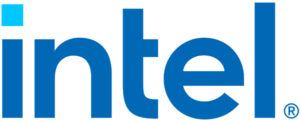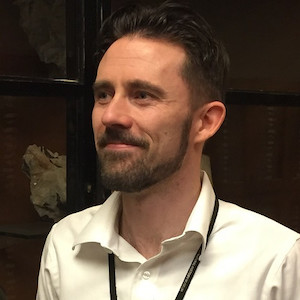Danielle Applestone: Along the thick jungled shores of the Amazon, countless nearby creatures stir as a small group of strangers emerged from a clearing and crouch by the water. They haven’t come to drink or hunt or even to rest. And what separates them from their surroundings is the technology they bring. They’re carrying sample vessels, laptops, communications devices, and maybe an energy bar or two. What they’ve come for is knowledge to be gleaned from a small sample of the river water, their brains, however well advanced, can’t fully process the information they’re gathering, but their technology will, technology that will digitize and accumulate huge amounts of data.
Danielle Applestone: The data these researchers collect will be added to a repository more than 5,000 miles away at the Natural History Museum in London, not in a cramped file room or on floor to ceiling shelves, but in an open digital database, processed at staggering speeds and providing insights that may help secure the planet’s fate. In this, the Anthropocene era, the age of humans. This is Technology Powers X, an original podcast from Dell Technologies. In this episode, technology powers knowledge millions of years in the making.
Danielle Applestone: You might not imagine that one of the great success stories in technology begins here underwater off the shores of Britain, or that insight into the future of the ocean ecosystem is not with that pod of whales, but rather with their lunch. Raju Misra is head of molecular biology at the Natural History Museum, London. As part of the Earth BioGenome Project, the museum is helping sequence and catalog the genomes of pretty much every species on earth. And one that surprisingly caught his attention is krill.
Raju Misra: Krill is not particularly glamorous, but it’s hugely important to the marine ecosystem. It’s obviously very, very small. We’re talking like one to two centimeters in length. It belongs to the arthropod phylum. So that includes other taxa, things like insects, say, or spiders and things like that. Because it’s so… you’ve got such high numbers of krill in the oceans, and it’s so integral to the marine food web. I mean, the obvious link, it supports the largest mammal known, so that’s the blue whale. That is their primary food source. Krill are incredibly important for that entire food web ecosystem.
Danielle Applestone: It’s estimated that the oceans hold some 379 million metric tons of krill. That’s more than the combined weight of all humans, which is handy because a blue whale might consume four to eight tons of them in a day.
Raju Misra: The obvious link here is we’ve got climate change, rising sea waters, the warming of waters, the changing of the chemistry of the water. All of that can have an impact on one of the primary food sources in the ocean that supports all these other mammals and other ecosystems within the marine system.
Danielle Applestone: In short, survival of these ecosystems depends in large part on the krill’s capacity to thrive in changing times.
Raju Misra: How are they able to adapt? Are they able to adapt? Or do we see them changing with the changing climate or the changing environment? And one of the most comprehensive ways of doing it as a first pass or first look is to look at its genome sequence.
Danielle Applestone: And where does technology come in? The key to measuring the present and future health of krill and the ecosystem that depends on them begins with genomic sequencing, which for this small crustacean, turns out to be much more complex than expected.
Raju Misra: So during that process, combining those different technologies, it quickly became clear that what we’re working with is a very, very large genome. So I think at the time of doing this, it was the largest genome sequence to date, and that was around 50 billion characters, so 50 billion bases. So if you think ATCGs as those characters, I think to put it in context, it’s about eight times bigger than the human genome.
Danielle Applestone: The museum’s genomic record is also shedding new light on past discoveries, for instance, Cheddar Man, also known as the first Britain. A century ago, his 10,000-year-old skeleton, the oldest known human remains in Britain, was discovered in Cheddar Gorge, Somerset. Scientists could deduce gender and physical features from the skeleton, that it was a male about 5’5″, who probably died in his early twenties. But given DNA samples, scientists at the Natural History Museum revealed striking new details, that he had dark black hair, very dark skin and bright blue eyes, details that could never have emerged just a generation ago.
Danielle Applestone: The Natural History Museum in London is a major player in the initiative to study human impact on the planet in this Anthropocene age. It’s working with several UK partners on an undertaking called the Darwin Tree of Life, part of the larger Earth BioGenome Project. The Tree of Life goal is to sequence a representative of every single species known to inhabit the UK, on land and in the sea.
Raju Misra: So the aim is obviously to create this genomic reference map for all these species, and that’s where you can do all the downstream application. So you can do the real-time identifications or will help annotate, describe those genomes in such detail that you can really pinpoint the bits that make it unique or the bits that are incredibly useful for it as it adapts to changing world or the changes through the Anthropocene, so things like climate change.
Danielle Applestone: Over many generations, the museum has amassed a collection of some 80 million specimens with hundreds of researchers. It’s akin to a small university.
Alison Davis: The museum’s a fascinating place to work because we have a lot of different strands to the organization.
Danielle Applestone: Alison Davis is chief information officer. In addition to the museum’s role as a retail organization, it’s also creating a system to digitize those 80 million specimens and the contextual data that goes with them.
Alison Davis: In order to manage those, we have a collections management system, which is basically a very big database. But the complexity of the data that you have to hold on each of the specimens is hugely high. We want to know things like where it was collected, because we can look at how habitats evolve over time with different specimens collected from the same area, and areas change. River courses change over time, for example, and things like that. So it’s quite complex in terms of the data that we need to keep. We’re one of the largest museums of our type in the world, so we have one of the largest collections. And therefore the challenges for us around that type of database are enormous.
Richard Hinton: Science is based on data. That’s the key to research and helping study.
Danielle Applestone: That’s Richard Hinton, the museum’s head of technology solutions and enterprise architecture planning. His task is to leverage the best available technology to give maximum value to its vast accumulation of knowledge and data. And a major part of that strategy is accessibility.
Richard Hinton: It’s what a scientist or curator in the field finds. And how do you share that data? So in the old days, everything was a physical specimen, locked in a cabinet or locked in a book. There was huge boundaries to being able to make that data open and available to anyone because all that science data is open data. The beauty of technology is it’s being able to get that data into a digitized format. You can then make it far more accessible globally for anyone to search. So if you’ve got the right metadata, if you’re sort of organized in how you’ve presented that data, and sometimes not, can be unstructured data. It can just be raw data that’s come out of a gene sequence or some other study. There is so much opportunity now provided by technology platforms for scientists to be able to discover more and share more, which is at the heart of what they do.
Danielle Applestone: That spirit led the Natural History Museum to launch its online data portal. It provides unfettered access to data sets on 4.7 million of the collection specimens. Alison Davis.
Alison Davis: Since we launched the data portal, we’ve had something like 25 billion records downloaded. So yes, there is an enormous use for this, and it has a huge ongoing impact in terms of the science that’s being done.
Danielle Applestone: Witness the 294 research papers at last count that drew on the museum’s data in 2020, and many of those papers were themselves cited in other papers. To Sally Eaves, CEO of Aspirational Futures, and a professor in emergent technology, this is the sort of open-source thinking that leverages tech as a force for good.
Sally Eaves: I think it’s an incredible work in terms of what people are able to access. I mean, their dataset is absolutely incredible. I think we need so much more of that multi-disciplinary research. We need that to be able to address some of the problems that we’re facing at the moment. And they’ve got historical data, geographical data, taxonomic specimen data as well. Putting all that out there, it’s really enabling much more open science to take place, whether that’s the individual citizen scientists or bigger projects, so all around that knowledge sharing, collaboration, what they’re doing really helps to make that happen. But also just in inspiring people to get into different careers and have different experiences.
Danielle Applestone: To Alison Davis, sharing the museum’s treasury of data goes beyond collaboration to a new brand of democratization.
Alison Davis: The beauty of digitization is they can actually see an awful lot about that specimen now online without having to travel. And that makes that data much more accessible to scientists the world over. So that’s a real democratization of research across the planet for people who want to get access to the museum’s data. So that’s one of the key benefits.
Danielle Applestone: Another benefit is the ability of digital to create a permanent detailed record of delicate specimens.
Alison Davis: There’s another potential benefit, which is that, in fact, some of the specimens may well degrade over time. Clearly, the rocks don’t, but there will be other specimens that may degrade over time. And by capturing them digitally, we have the opportunity to preserve them better. So part of our legal duty is to preserve the collection for the nation. One of the ways that we can do that, in fact, is by digitizing it.
Danielle Applestone: A third and no less vital benefit to digitizing is the ability to provide detail and data that the naked eye won’t reveal.
Alison Davis: So for example, 3D imaging of whale skulls lets people look in much more detail at the skull and you would be able to just by visiting the museum. So if you’re looking at Hope the whale, and you’re standing on the ground, there’s only so much detail you can see. Whereas if you have a 3D digitized image that you can rotate and move around and see around, then you can actually see more detail than you can by seeing the real specimen, particularly for very large specimens.
Danielle Applestone: Richard Hinton describes how the Natural History Museum is also using technology to encourage discovery, including a new digital brand of citizen science.
Richard Hinton: So for the Urban Nature Project, this is a massive redevelopment and re-imagining of the museum grounds and gardens in South Kensington, and includes great outcomes for citizen scientists across the country. It will be helping people collect data on wildlife, recording, video, things like that, and sensors across the grounds, and then bio-blitzes, so visitors and school kids making records of what they found. It’s very much about enabling and involving the widest possible audience in natural science and understanding biodiversity.
Danielle Applestone: Diversity being an operative word. To Sally Eaves, this sort of tech-assisted discovery is a great equalizer, inspiring young people of all backgrounds. And it may be just the ticket for inspiring careers in STEAM, science, technology, engineering, the arts and maths.
Sally Eaves: So I wholeheartedly believe that technology is a huge force for good in education, but also to inspire the next generation of research and researchers. So one aspect of this is STEAM learning. Tech could be that conduit to give people access to new experiences, to bring people together, to collaborate better, to co-create and bringing down some of the traditional barriers to access. And supporting that new advancements in emerging tech from high-performance computing to AI, but also the rise of 5G. Putting all these things together, I think we’re seeing a new dawn of what we can do in blended learning into the future, which I think is going to be absolutely critical.
Danielle Applestone: By taking a leadership position on climate change, the environment, and global sustainability, the Natural History Museum feels the strong tug of responsibility to lead by example.
Alison Davis: So yes, the museum is very much at the forefront of communicating the message about sustainability. And you will have had people like David Attenborough, who is very closely linked to the Natural History Museum, beautifully articulating the challenges that face us, but it also means that we have to be responsible ourselves in terms of how we can be sustainable. And that’s a challenge with a building that’s the age of the museum, and with all the things that we need to consume.
Danielle Applestone: Using technology to meet that challenge, the museum created what it calls its Digital Twin Technology Vision, a sort of digital dashboard conceived to streamline energy use and consumption. Richard Hinton.
Richard Hinton: We’re currently working on a proof of value exercise that brings together data from environmental monitoring, building management, our energy center. So that provides heat, heated water, and electrical charge to the NHM science museum and the V&A. If we can bring all that data together with things like external weather data feeds, buildings’ conditions data, even things like visitor numbers, because everybody gives off about a hundred watts of heat energy. So if you’ve got 5 million people coming through a year, that adds up. So we want to look at how all these different factors actually impact on each other. And you want to avoid situations where you might be heating a room, and then later in the day, you end up cooling that room with air con. So we’re trying to find ways where you could actually find a much more optimal way of just keeping the same conditions throughout, and that would have massive energy savings and cost implications, but also we can far better protect the collection through doing that.
Danielle Applestone: As an engine helping to drive research, visitor services, data sharing, programming, and sustainability initiatives, technology and tech partnerships are the key to the museum’s 21st century success. And Dell Technologies has been key in providing IT infrastructure, from storage and servers to PCs.
Richard Hinton: So our primary objective is maintaining secure, fit for purpose, and sustainable technology foundations. So by that, it’s around the caring and feeding of our enterprise services and the network and compute and storage infrastructure, through to the end-user hardware and applications. For the science that’s based on high-performance compute requirements, we have a Dell PowerEdge, so we’ve got 96 cores and 192 threads, and about two terabytes of RAM, and then associated storage. In terms of end-user compute, we are predominantly a Dell house. So we’re on a PC as a service contract at the moment. The predominant user base is that. And there are scientists that are out in the field doing research, doing study, doing collections, and they’ll take their devices out there.
Danielle Applestone: Nowhere are those accelerated outcomes being more welcomed than in the field. By examining environmental DNA, or eDNA, scientists can determine whether certain species are active nearby by identifying the cells they shed. Historically, scientists might have journeyed for months to a lab from say, the Amazon back to the UK before studying what they’d found. As Raju Misra notes, technology enables today’s field researcher to process genomic data on the spot.
Raju Misra: The immediacy, the questions people want to know sometimes is simply, what is it? Is it where it’s supposed to be? What does it do? And to be able to do that real-time in the field is only in the last few years that you’ve been able to do this with the advent of high throughput, portable sequencers or diagnostic hardware, software, and things like that.
Danielle Applestone: So continues the digital revitalization of museums, as technology empowers scientific minds to new accelerated discoveries, driving knowledge, helping solve global problems, and inspiring a diverse new generation of scientists and explorers with STEAM learning.
Danielle Applestone: This is Technology Powers X, an original podcast from Dell Technologies. For more information on Dell EMC PowerEdge servers, please visit DellTechnologies.com/servers. For more information on Dell PC as a Service, please visit DellTechnologies.com/pcasaservice. I’m Danielle Applestone. Thanks for listening.
 Dell Solutions with Intel®
Dell Solutions with Intel® Raju Misra
Head of Molecular Biology, UK Natural History Museum
Raju Misra
Head of Molecular Biology, UK Natural History Museum
 Alison Davis
Chief Information Officer, UK Natural History Museum
Alison Davis
Chief Information Officer, UK Natural History Museum
 Richard Hinton
Head of Technology Solutions and Enterprise Architect, UK Natural History Museum
Richard Hinton
Head of Technology Solutions and Enterprise Architect, UK Natural History Museum
 Sally Eaves
Chief Executive Officer, Aspirational Futures
Sally Eaves
Chief Executive Officer, Aspirational Futures
